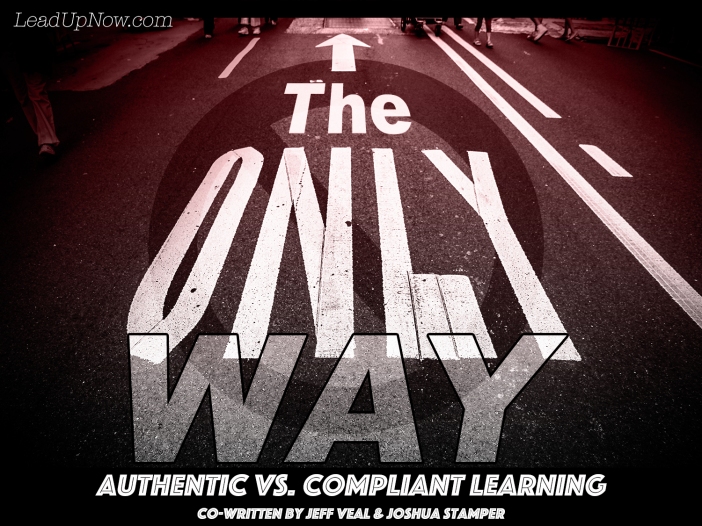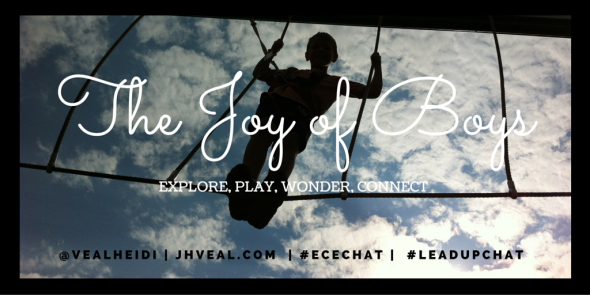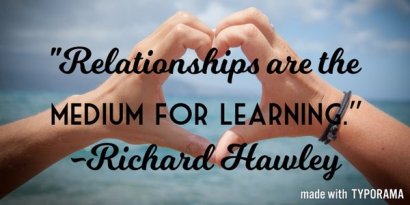“Authentic learning is not discovered in a textbook, but rather at the crossroads of contemporary societal issues and student passion.”- Aaron Duff
When I (Joshua) tell people that I am a middle school administrator, I usually get the same responses.
“God bless you!”
“I could never do that!”
Which eventually leads to,
“Have schools and students changed much?”
Often, after hearing this line of questioning, I wonder how it would be to be a middle school student now. As a middle school student, I viewed my school as an irrelevant and inapplicable entity due to the extremely monotonous exercises, which lacked an explanation of real-world application. Each class was a carbon copy of the other and the classrooms, teachers, and students participated in similar traditional patterns and rituals. Students were observers of a dictated, fact-based instruction, which relied heavily on the use of teacher lectures, packets, and textbooks. The lessons were linear with a determined outcome. The experience proved compliance was the greatest quality for a student to possess for success.
My view of school was extremely jaded until I took a class on Shakespeare. I really don’t know the reasons why I took the course since, at that time, my reading material consisted of sports magazines and comic books. My teacher, Mr. Wasmund, had an amazing way of reading the material with passion, explaining the meaning behind the language used in the text, relating the stories to current events and creating a desire to read more. It was very apparent that Mr. Wasmund was motivated by the love for the material, the relationships built with his students and the grit shown by his students on a daily basis. The learning environment was about sharing ideas, collaborating on projects, debating confrontational topics, and performing the Shakespearean plays. For the first time, I wasn’t worried about my grade in a class. The growth of knowledge was natural. After experiencing a new way of teaching, hope began to grow in the knowledge that learning could be fun and voluntary.
Aaron Duff’s quote depicts the direct relationship of authentic learning through societal events and beliefs with student convictions, passions, and interest. If teachers can consistently establish the relevant purpose of each lesson, students will create connections between their skills, personal talents, and current issues. The classroom is no longer a setting only to gain information. Instead, the learning environment is an opportunity to relate to real-world problems, partnered with purposeful roles, current data sources and expanded audiences for immediate feedback.
I (Jeff) have had the opportunity to spend the majority of my education career working with middle school students as a teacher and an administrator. Middle schoolers have no fear in sharing their honest opinion for good or bad about a class or teacher, call it – no filter. They never seem to mind pulling back the curtain and letting you know the teachers and content that they connect with the most. Middle school is a time when students are motivated by self-interest and as educators, rather than seeing that as a deficit, we have a tremendous opportunity to tap into the power of that potential to engage learning. Students in these middle years are passionate, curious, increasingly reflective, and are starting to question the world as they develop their own identity. This is a good thing. As Josh shared, relationships are the gateway to unlocking learning for kids today, now more than ever. Kids don’t learn from teachers they don’t like. Period. Once teachers foster the relationship, they have the power to move students towards authenticity. Let me share a few additional ways we begin to move students on the path towards engagement.
3 Ways To Encourage Authentic Engagement for Our Kids Starting Now…
Discover Rather than Cover
Often in education, we have covered a lot of material in the name of learning, throwing out curricular spitballs hoping something will stick. Great curriculum only becomes meaningful for students when the instruction engages them in the process. Using essential questions (Understanding By Design) is critical to keeping students grounded in the process of their own learning. Many educators may say they feel limited by the standards they must teach. I would suggest that we are only as limited as we are making for kids. It becomes a question of “how” you are going to teach a concept or skill that is most relevant.
One way to move students to personal engagement is through competition and gamification. For example, this past week I walked into a 6th-grade social studies classroom to witness latitude and longitude demonstrated in a friendly game of Battleship. This teacher could have used a worksheet and students would have been compliant, but instead, she met kids where they were at! They went home with a story and an experience that they will remember and ground their learning to apply to future situations.
Cross Curricular Connections
The learning becomes more authentic when it doesn’t “stand alone” for students. Our kids can easily compartmentalize content if we do not create connections or applications across broad subject areas. For example, I can remember a student saying, “ why are we talking about science in our history class? The greater question should be, “why are we not?” Our students are grounded in deeper learning when we create transference of an idea or skill across multiple contexts. Our goal should be for students to see concepts that move freely in and outside of one content area to the next. If you are not already doing this, consider how your team could move towards this alignment at least 1-2 times this school year. This could be a skill you want to strengthen such as writing across the curriculum or conceptual collaboration that all content areas can explore.
Learning Beyond the Threshold
We don’t have to struggle to create connections for our students. On any given day you can engage students by creating real-world connections through novelty and current events. We do not need to be afraid to integrate everything from fidgets to pop culture to societal struggles in our conversations with kids. They are looking to help us make sense of their world. We don’t have to act like the standards are separate and apart from kid’s experiences, because they are not. For example, are you using writing prompts that pull in current events or grappling with ethical questions that stir healthy discourse between your students? In Denis Sheeran’s book, Instant Relevance, he further expands the practical ways to engage learners and I would encourage you to check it out!
Ultimately, students are hungry, eager, and deserve to move beyond “compliant” at worst and “comfortable” at best to embrace learning as their own. We have a captive audience every day in our schools for upwards of 8 or more hours, don’t waste a single minute. This year, let’s set a goal that we will not bore students with one more piece of seat work that is about ensuring we are keeping kids busy. Our learners need to connect their passions with meaningful experiences that translate into authentic engagement! Embrace the challenge and commit to never going back to just “ok.”
-Jeff and Josh
*this is also cross posted as a featured blog at leadupnow.com
Joshua Stamper is currently the Assistant Principal at Renner Middle School in Plano, TX. For further reading by Joshua, check out his posts at joshstamper.blogspot.com or on Twitter @Joshua__Stamper
















